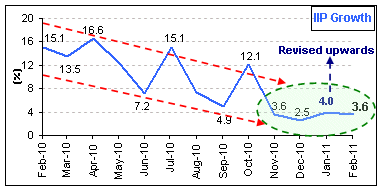Impact 
 In order to safeguard banks from defaults arising out of educational loans, the Indian Banks' Association (IBA), the industry lobby of lenders, has constituted an expert committee under Indian Bank Chairman and Managing Director Mr. T.M. Bhasin to modify the education loan scheme launched in 2001-02. In order to safeguard banks from defaults arising out of educational loans, the Indian Banks' Association (IBA), the industry lobby of lenders, has constituted an expert committee under Indian Bank Chairman and Managing Director Mr. T.M. Bhasin to modify the education loan scheme launched in 2001-02.
The modified version of the loan scheme, if implemented will benefit the student community in a big way. Under the revised version of the loan scheme, students who pursue higher studies purely on their merits and having sufficient academic credentials will get more time to repay their loans after finding suitable jobs. But on the other hand, those students who do not have sufficient academic credentials and are getting admission through other means such as donation and "quotas" may find it tough to get money from banks.
The expert committee is also expected to plug the loopholes in the loan sanctioning process. Often banks are compelled to give loans to students under pressure from politicians and people of influence in rural and semi-urban pockets even when they are not fully convinced about the credentials of the students. Also, the practice in many private colleges, particularly in south India, to "auction" seats to students who are not otherwise eligible for admission is utterly disgraceful.
We believe that such an initiative by the IBA will provide impetus to hard-working students who burn the midnight lamp to get good grades and aim to pursue higher studies. As more and more students are encouraged to pursue higher studies, India will be in a great position to produce a highly skilled workforce. A highly skilled workforce is essential for a country to grow.
And to India's good luck the demographic profile of the country is one of the best in the world (with working age group population to reach about 65% by 2030). Hence, such an initiative should be implemented soon and supplemented with the right infrastructure support from the Government. |
Multibagger Stock Ideas
Claim this Free & Exclusive Guide Today. Act Now!
CLICK HERE to know more...
|
|

Impact 

(Source : CSO , PersonalFN Research)
The Index of Industrial Production (IIP) once again displayed signs of mellowing down by registering a growth of 3.6% in February 2011 as against 3.95% (revised) in the previous month. A deeper analysis also reveals that this overall downward trend is due to high base effects of the earlier period and 8 successive policy rate hikes by the country's central bank – RBI, since March 2010.
The drop in IIP for the month of February 2011 is attributed to the following factors:
- Mixed sectoral growth: The capital goods index once again continued to display its dismal performance by registering a negative growth of 18.4%. This downward streak in the capital goods index is witnessed since December 2010 where it registered a negative growth rate of 9.3%, and then again -18.8% and -18.4% in January 2011 and February 2011 respectively.
However, the consumer durables once again came to the rescue and posted a robust growth of +23.4% in February 2011 as against +23.3% in January 2011. But on the other hand, consumer non-durables dipped a little to 6.1% in February 2011 from 7.7% in January 2011. Overall the consumer goods index posted a decent growth of 11.1% in February 2011 from 11.9% in January 2011.
- Manufacturing index: The manufacturing index (which constitutes 79.4% of the IIP) posted a growth of +3.5% in February 2011, thus being almost close to the one reported in January 2011 (3.6%). But, when assessed over a period April 2010 – February 2011, manufacturing index posted a respectable growth of 8.1%.
We believe that though the IIP may have slipped in February 2011, India's long term growth prospects still looks quite robust. The sideways movement in the IIP is mainly due to the base effect which will fade off after a couple of months. Hence, we expect the IIP to once again start its northward journey in the next couple of months. However, we see the following points as obstacles to the up-move of the IIP:
- Rising borrowing costs due to high interest rates
- High crude oil prices translating into high inflation
- Slowdown in consumption
- Impact of any global events
|
|

Impact 
 The Insurance Regulatory and Development Authority (IRDA) issued new guidelines to insurance companies whereby with effect from October 1, 2011 they will need to make sure that the tele-callers of insurance products are imparted training according to the syllabus prescribed by the insurance regulator. Tele-callers should also inform clients that the call is being recorded and that the client is entitled to a voice copy. The Insurance Regulatory and Development Authority (IRDA) issued new guidelines to insurance companies whereby with effect from October 1, 2011 they will need to make sure that the tele-callers of insurance products are imparted training according to the syllabus prescribed by the insurance regulator. Tele-callers should also inform clients that the call is being recorded and that the client is entitled to a voice copy.
The new guidelines would apply to telemarketing and distance mode marketing channels where a policy is issued without obtaining a proposal in the physical form. Tele-callers will thus have to inform the prospective clients that the call will be recorded and they will be entitled to a voice copy (transcript of the voice/electronic record) for all the queries raised and answers on the basis of which the policy has been underwritten, along with the policy bond.
Moreover, in order to add further add vigilance to insurance sales via tele-calling, the new guidelines also preclude solicitation of ULIPS (Unit-Linked Insurance Plans) where the non-single annualised premium is over 50,000 and single premium is over 50,000 and single premium is over  1,00,000. Also the IRDA has banned selling or soliciting variable insurance products over distance marketing mode. 1,00,000. Also the IRDA has banned selling or soliciting variable insurance products over distance marketing mode.
We believe that such an initiative by the IRDA is in the best interests of the policyholders. In the past there have been instances where policyholders have been duped insurance policies being mis-sold to them. But now in our opinion such guidelines will levy a thorough vigil on how an insurance policy is solicited to you investors, and will help in accounting for cases of mis-selling.
While all these guidelines issued are good, we strongly believe that while buying an insurance policy you should incorporate some financial planning aspects such as your age, number of dependents in the family, your income income, expenses etc. which will help you to assess your Human Life Value (HLV), and lead you to buy the right insurance cover. Also we believe that your investment and insurance needs should be dealt separately where in case of life insurance you should opt for only a term insurance plan, and for your investment needs you can opt for pure investment products such as mutual funds, fixed deposits, corporate bonds, gold, etc. Moreover, while buying an insurance cover you should also need to focus on the insurance companies claim settlement ratio, profitability of the insurance company, premiums charged, etc., which help you to buy a insurance plan from the right insurance company. |
|
| Weekly Facts |
|
Close |
Change |
%Change |
| BSE Sensex* |
19,386.82 |
(64.6)  |
-0.33% |
| Re/US$ |
44.51 |
(0.3) |
-0.68% |
Gold /10g /10g |
21,165.00 |
185.0 |
0.88% |
| Crude ($/barrel) |
122.77 |
0.8 |
0.69% |
| FD Rates (1-Yr) |
7.00% - 9.00% |
Weekly change as on April 14, 2011,
*BSE Sensex as on April 15, 2011.

|
|
In this issue
|
|

This Week's Poll !!!
************
Does the Government provide adequate support to education?
To Vote Now!
|
|

In an interview with the Economic Times, Ms. Roopa Kudva – Managing Director and Chief Executive Officer, CRISIL shared her views on the ratings upgrade by CRISIL, worries for Indian corporates and economic growth in India.
Ms. Kudva believes that ratings were upgraded due to healthy demand and strong funding environment. According to her, a lot of companies took advantage of strong equity markets and mobilised money from equity markets. However, she cautioned that the profitability will be under pressure due to rising input costs.
As far as the Indian corporates are concerned, she thinks that the demand is the key thing to look out for and sustaining it is important because profitability is one thing we cannot do anything about. Oil prices are high, commodity prices have gone up; interest costs have already climbed up and are likely to rise even more. So on the cost side; she says one has a very little flexibility now. Further explaining the worries for the Indian corporates Ms. Kudva says, "Therefore, your revenues have to be increased and that would be dependent on how demand goes up. So the single most important variable to be monitored is demand. So far, there are no signs of slowdown. But I think some moderation is expected. If you look at upgrades to downgrades, which we call our modified credit ratio, we are saying it has peaked. It is not going to go up further."
On India's economic growth prospects, Ms. Kudva expects India to be the fastest growing economy. One of the major factors to drive this growth she feels is the demographic profile of the country. According to her, the high working age population will fuel demand momentum for a whole lot of goods and services like education, health care, infrastructure, consumer durable and automobiles. However, she opines that if India were to achieve inclusive growth, it should aim at 10% growth.
Addressing the gaps that need to be addressed to achieve 10% growth she explains that, "One is the physical infrastructure, two is the skills agenda. So on one hand you have a lot of young people and lots of jobs. But we don't have the right people for the job, so skilling India is one of the big issues if we have to convert this 8-9% growth into 10%. Thirdly, the fiscal flexibility of the government to spend more in all these areas has to increase. Fourthly, the growth rate in the agriculture sector has fallen in the last 2-3 decades due to inadequate investment in extension of services. The last factor is the issue of policy environment and governance which will encourage people to invest. These are the five things that make a difference between 8%, 9% and 10% growth." |
|

Overheated Economy : When a prolonged period of good economic growth and activity causes high levels of inflation (from increased consumer wealth) and inefficient supply allocations as producers overproduce and create excess production capacity in an attempt to capitalize on the high levels of wealth. Unfortunately, these inefficiencies and inflation will eventually hinder the economy's growth and cause a recession.
(Source: Investopedia)
|
|

QUOTE OF THE WEEK
"Being ignorant is not so much a shame, as being unwilling to learn."
- Benjamin Franklin
|
|